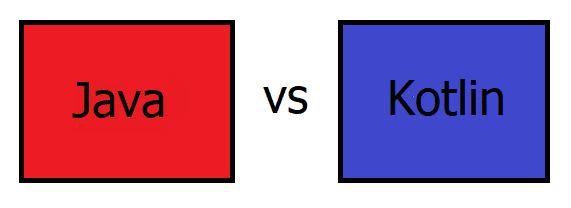Hello Readers,
Today, we will be going to read about the differences between the two very popular languages i.e. Java and Kotlin. Both two are in fact, very popular especially among the android developers.
Kotlin was officially released in February 2016 by JetBrains inc. In spite of Kotlin showing static behavior as it is statically typed, unlike Python.
In Android Studio, both languages have in-built support.
Related – Why should a programmer do Hackerrank?
Kotlin vs Java: Most Important Differences

Both Java and kotlin are dominant languages in the android space. Since many developers are moving from Java to Kotlin and many still prefer Java, So, it is the right time to look into Java vs Kotlin and which one is better
Java vs Kotlin
Now, the main question, which is in fact very confusing among the developers is that, whether they should switch to Kotlin from Java or not. Well, the question is not so easy to answer and it is not a single line answer.
It depends on various factors and aspects. In this article, we will be going to cover each and every aspect.
Related – Why should we do star pattern problems?
Exception Handling
One of the major differences between Java and Kotlin is Exception Handling. Java has a different way to handle exceptions.
In Kotlin, there is no provision for checked exceptions. So, there is no need to catch and declare exceptions.
Now, this thing can be positive or negative and depends on the developer, the software is to be developed by the programmer only.
If a developer finds the exception-handling mechanism in Java a hell! , then this is a welcome change for that developer. But, on the opposite side, a developer may believe that checked exceptions encourage error recovery and thereby leading to a robust solution.
Code Conciseness
Kotlin follows the code conciseness principle i.e. for performing the same operation, Kotlin class necessities for less code as compared to Java class.
For example, a particular segment Kotlin can significantly reduce the total amount of code is findViewBylds.
So, in terms of code conciseness, definitely, Kotlin earns more marks than Java.
Data Classes
In full-size projects, there are many classes, that are merely to hold data, though, they have very little or no functionality. But, in Java, the developer has to write a lot of code.
On the other hand, Kotlin has a very simple way for those classes. In Kotlin, the developer needs to only include the data keyword in the class definition and your work is done.
Extension Functions
An advantage that Kotlin offers as compared to Java is that it allows developers to extend a Kotlin class with new functionality via the extension function.
In Kotlin, creating an extension function is an easy task.
In Kotlin, to call the function on the instances of extended class, one has to use ‘.’ notation.

Inline Functions
Variables that are accessed in the body of the function are known as closures. Making use of higher-order functions can impose several runtime penalties. Every function in Kotlin is an object and it captures a closure.
Both classes and function objects call for memory allocations. These along with virtual calls introduce runtime overhead. Such an additional overhead can be avoided by inlining the lambda expressions in Kotlin. One such example is the lock() function.
Kotlin provides support for inline function which is not there in Java.. Nonetheless, the Java compiler is capable of performing inlining using the final method. This is so because final methods cannot be overridden by sub-classes. Also, a call to a final method is resolved at compile time.
Non-private Fields
Encapsulation is a very important feature of the Object-Oriented paradigm and it is also very essential for the maintainability of any project.
By encapsulation, the access level of any function or class can be controlled. Public, Private or protected is called access modifiers.
Public or non-private fields in Java are very useful or convenient for programmers where the callers of an object need to alter accordingly to its representation. It means that such classes or functions are open or they expose the representation of the object to the callers.
Since Kotlin doesn’t have non-private fields; this will be an advantage to Java developers as compared to Kotlin developers
Difference in Primitive Types
In Java, there are 8 primitive types: char, double, float, int, etc and in Kotlin, the variables of a primitive type aren’t objects. This means that they aren’t an object instantiated from a class or a struct.
Static Members
In Kotlin, there is no provision of static members. However, in Java, there is a great importance of static members in Java because if a member function is static, then the copy of that member function will remain the same across multiple objects.
It simply means that in Kotlin, you can’t make a class member copy common to all objects.
Ternary Operator
Java has a feature of the ternary operator which is not there in Kotlin. The ternary operator simply works like a basic if statement.
I hope you like this article, don’t forget to comment and share it with your friends and family.
Thank you!

Comparing Kotlin and Java is not easy and requires a lot of assumptions and facts, but Kotlin is worth opting for at the moment. From the development angle, it is simpler, easier, and cleaner, helping you remove long boilerplate codes.